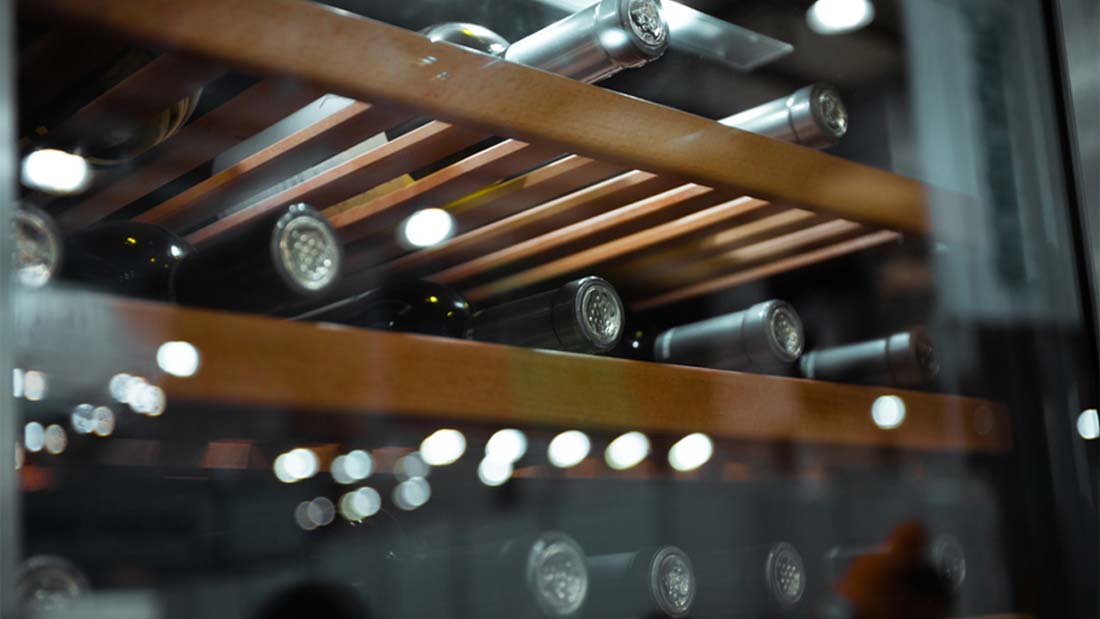
07 Oct Considerations While Building An All-Glass Wine Cellar
Full glass wine displays provide refinement and charm to any commercial or residential setting. Glass enclosures can preserve and mature small collections or exhibit hundreds of vintages while maintaining two different serving temperatures. All-glass wine cellars can demarcate open-concept rooms or accommodate a few guests. They add a solid statement to every space, regardless of its dimensions.
Nevertheless, as fun as it is to develop and build a modern wine cellar, it must be capable of preserving immaculate temperature conditions. When glass sheets are the primary design element, understanding factors and technical needs will result in a better outcome.
The Importance Of Climate Control
Most wine enthusiasts know that they should store their wines in a relatively cold environment. Some might be tempted to utilise air conditioning equipment to maintain low temperatures. However, mini-splits were built to support human comfort at 22 degrees Celsius, not wine collections. The optimal conditions for wine preservation are 50 to 70 per cent relative humidity and 11-16 degrees Celsius.
Temperature changes degrade and accelerate the maturing of wine. As the bottle’s wine temperature rises, the liquid expands and creates internal pressure. The wine’s aroma eventually escapes through the cork, compromising its quality. When the temperature decreases, exterior air rushes inside a bottle, compromising its flavour and aroma.
Additionally, humidity is a crucial aspect in wine preservation. Mould can grow, and labels and adhesive can disintegrate when relative humidity exceeds 70%. Below 50%, corks might dry up and content in the bottle can evaporate.
Assuring perfect climate control standards depends on two factors: good construction and a powerful cooling unit that may be more challenging in glass-only areas than in conventional wine cellars.
Installation Considerations
A conventional wine cellar begins with a vapour barrier and barrier to keep out humidity and external temperatures; however, these components are not available when using glass. However, double-paned glass with suitable insulation and thresholds is a positive steps toward building an impermeable room.
If feasible, insulating the base and ceiling of a glass wine cellar will strengthen its structural stability. Calculating the space’s heat load is the initial step in determining the most suitable cooling system. This factor is determined by several variables, including exposure to artificial light and sunshine, the volume of the room, the temperature outside the custom wine cellar,
If your cellar has four glass walls, you will find it challenging to plan the perfect climate control system. For instance, an area that receives a great deal of direct sunlight would require a larger capacity unit compared to a similar sized one that does not create additional heat.
A Few Words Regarding Temperature Control
An installation with all glass walls restricts the available cooling unit options and necessitates greater imagination to disguise the components. It is difficult to exhaust air from walls and rooms made entirely of glass. Contractors and HVAC specialists must connect flexible ducting in space-appropriate arrangements.
Finding a method that does not involve ducting is another alternative. In either case, the objective is to transfer supply and return air from the all-glass wine cellar through the top to conceal ugly mechanicals.
Cooling Systems Designed for Glass-Only Wine Displays
Self-contained ducted cooling systems are intended for optimum installation flexibility, and the condenser and evaporator are located outside the cellar in a small, adjacent space. Insulated flexible ducting connects a grille atop the wine room to the building’s mechanical systems.
Due to their superior cooling capacity, ducted systems are ideal for bigger, all-glass wine enclosures. Ducted split units provide a great deal of flexibility. They are suitable for glass wine cellars where it is difficult to vent condenser air. Unlike ducted systems, split systems must be installed by a professional HVAC technician or electrician.
Glass wine containers are a contemporary technique for storing and maturing wine. However, the layout must be suitable for glass-only spaces. Planning the perfect storage for your wines involves planning and knowledge, and that’s where our expertise comes in. We can help you plan and install the best wine cellar for your home.
For details about custom wine cellar designing and installation services, call Signature Cellars at this number – 1300 570 636. Our skilled and creative designers are here to help with your wine cellar requirements from the ground up.
Thanks for reading,
Signature Cellars
1300 570 636




No Comments